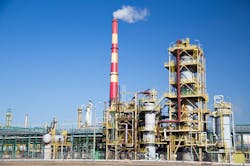Our never-ending educations, in engineering and otherwise
In the early 20th century, the Russian revolutionary, Leon Trotsky, advocated sending into the collectivizing countryside three-person teams including an engineer-scientist, a mechanic and a "communicator" to translate between the two. Just think of all the lessons that communicator learned.
If he was first assigned as a technical writer in the engineering department of a maker of heat-treat furnaces, he might have learned the difference between the "art" of engineering and the exactitude of science. In other words, just because the engineering-file calculations said the temperature of the quench oil would rise 28 degrees F upon introduction of the heated load, doesn’t mean that figure should appear in the furnace operating manual. That calculation, he would later realize, was more of an approximation, to ensure being within a parameter range.
He would further learn that if that statement about rising oil temperature did appear in an operating manual it could later prove a point of some considerable contention.
Chemical industry
In the late 1980s and early 1990s the expanding North American chemical industry included an impressive list of industry publications, from Chemical Week to Chemical Engineering. Some of these magazines published folios of more than 150 pages as many as 14 times a year.
It must be admitted that our friend was callow enough to find the idea of a glossy magazine about chemical processing — and one having the production values associated with luxury brands — as somewhat absurd. But it was soon made clear to him that there were others who took the whole thing very seriously.
Business models
In the 1990s, the industrial enterprise was being modeled in software, with "enterprise resources planning." What’s followed has been a proliferation of software that models every conceivable variant of financial transaction, manufacturing mode or supply chain network you could imagine.
For some time, there was faith a single system could manage all, or that a single planning engine could encompass entire supply chains, but the footprint kept growing and it all got unwieldy — and expensive.
The number of ERP vendors in the world rose to more than 200. Inevitably, after several years, the market contracted in waves of acquisitions and mergers so that there are today only a handful of global players.
When Trotsky gave his teams their final briefing, he never mentioned they were going to be running into the likes of Microsoft’s Bill Gates or Oracle’s Larry Ellison.
